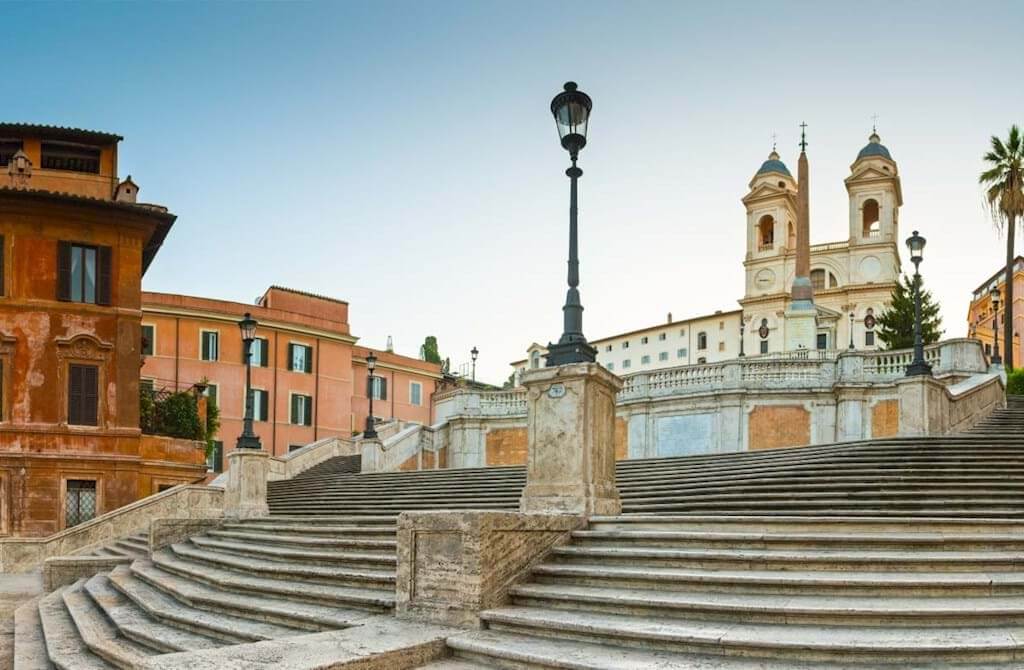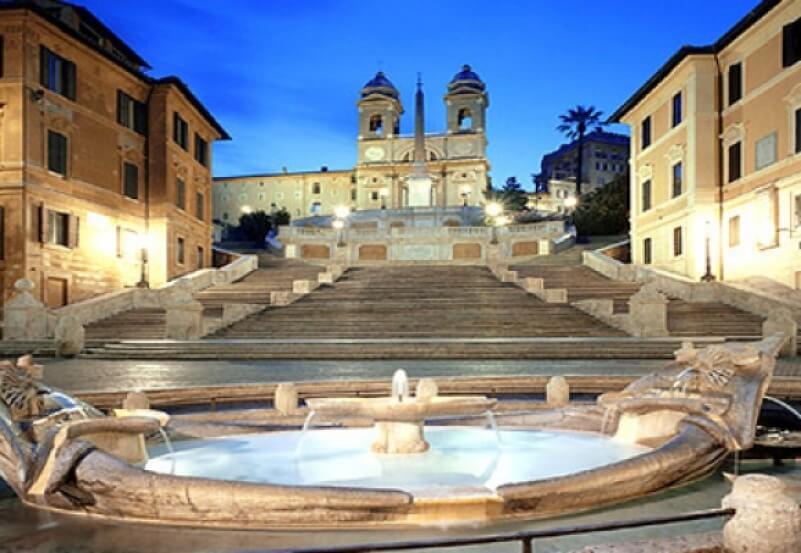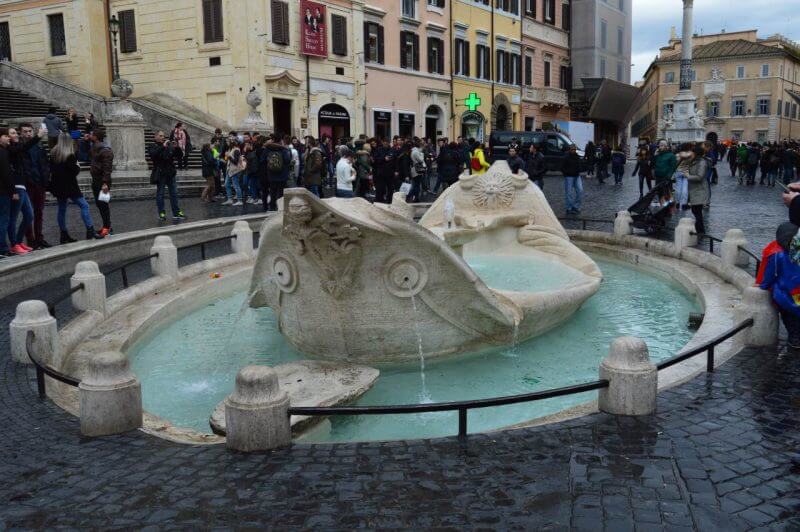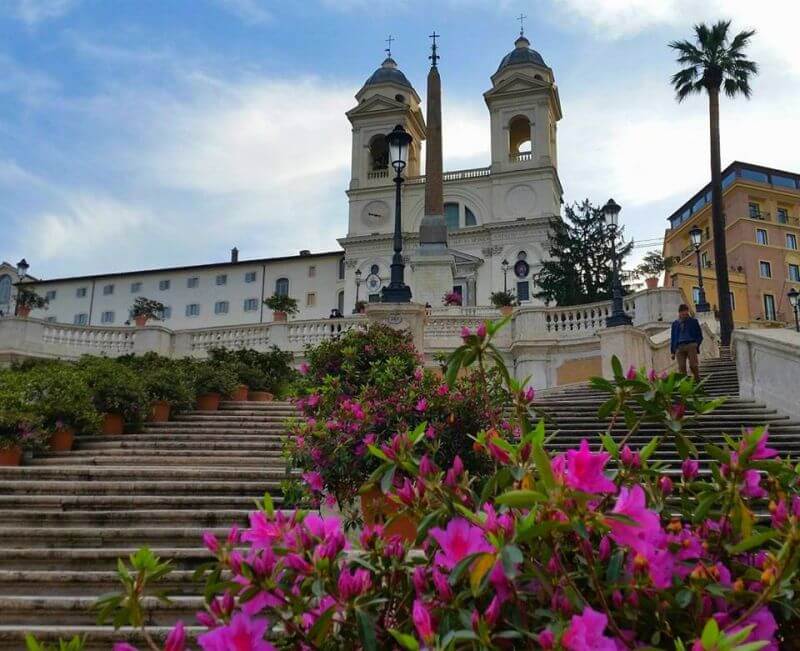 Image Source: citywonders.com
Image Source: citywonders.com
To some The widest stairway in all of Europe and to some ‘just a stairway”. The Spanish steps can leave a different impact on different visitors. No matter if you go there for the hype, the history, or the aesthetics only. Spanish steps have a dim history to whisper in your ear.
Locally known as Scalinata di Trinità dei Monti in Italian. It is one of Rome’s most popular tourist sites. The reason behind its popularity can not be just wide and pretty, right? It has a reasonable history. Before jumping into that let’s find out where it is located.
Where are the Spanish steps located?
The official address of this lovely staircase is Piazza di Spagna, 00187 Roma RM, Italy. But I guess you won’t have to hassle at all to find the location. The place is so famous that it is considered to be a meeting place for other tourist spots.
It is situated in a steep slope between the Piazza di Spagna at the base and Piazza Trinità dei Monti. Connecting the major building, church and the much talked about Spanish embassy. Which name it took afterward. Tempted to know more about its history?
Let’s dive in.
History of Spanish steps
The Spanish steps are considered to be a landmark in Italy’s capital. It is designed by an Italian architect Francesco De Sanctis. The fund came from a French diplomat named Étienne Gueffie. Made by an Italian architect funded by a French diplomat, situated in Rome, then why take the name of “Spanish steps?”
The real reason behind this is the surroundings of these steps. These steps are named after the Spanish Embassy situated nearby since the 17th century. And the steps were built in the 18th century to connect both the Embassy and the Trinita dei Monti church.
But who knew that in modern times it will get more importance and appreciation than the Embassy and the Trinita dei Monti church. Its Baroque architecture style, 29 meters Height, and spacious appearance have caught every visitor’s attention for centuries. The baroque architecture style is considered to be a highly decorative and theatrical style.
It first appeared in Italy in the early 17th century. The gradually spread across Europe. So its significance in the history of architecture is also special.
English influence
The location has some history of English influences as well. Famous British poet John Keats once lived in the building adjacent to the steps. In fact, many Romantic English poets in Italy spent time around here. A great place if you are a poem enthusiast.
The famous ugly boat fountain
Another bit of history which is skipped mostly by many is the famous ugly boat fountain situated nearby. Many wonders about this fancy name. It is situated in Spanish square. It is also called ‘Fontana Della Barcaccia’ locally. It is another masterpiece by the famous Bernini family.
 Image Source: askideas.com
Image Source: askideas.com
With an unusual sinking boat appearance, you can also see two suns located at two points of the boat. They are a sort of signature stroke of the artistic Bernini family.
A city legend says the fountain was built on papal orders. It was inspired by a flood that carried a fishing boat all the way to the square. Hence an ugly sinking boat in the mid of the Spanish square. Who knew these mere steps had so many bits and bites of history, right?
What to do when you visit
Well for many restrictions imposed in the new law of 2019 you can’t do all the chilling stuff that people used to talk about a few years back. Like sitting and eating like a picnic in Spanish steps. Does that mean there’s nothing to do while visiting Spanish steps?
Come on you will be in Rome. There’s something or the other to see, try and explore in every corner of Rome. But if you need a quick guide I can be of some assistance. The place is considered to be the city’s shopping district. All the top brands are lined up in there. You will find,
- Gucci
- Prada
- Jimmy Choo
- Hermès
- Bulgari
- La Perla
As they are all high-end brands don’t be shocked to see the price tags. If you are not comfortable buying that much expensive product (I won’t either) you can try window shopping.
But the crucial part of visiting the Spanish steps is the Timing. To get the best of Spanish steps experience try to visit it in the spring or early summer. At that time the stairway is decorated with pink azaleas for a month or so.
That is a stunning visual to enjoy and a perfect backdrop for your Instagram stories. If you just be a little bit open-minded and show interest in knowing the history of Spanish step like you did by reading this blog, you will surely have a great time there.
Caution
If you are planning on sitting on Spanish steps having a cute little picnic then drop that idea right there. You can’t eat your sandwiches up there. To preserve the beauty of this UNESCO world heritage site it is strictly forbidden to sit, eat or do some graffiti up there.
 Image Source: anothermilestone.eu
Image Source: anothermilestone.eu
To protect the decorum on the streets of Rome these strict measures are taken in many places of Rome. Including another famous tourist spot the trevi fountain. These new laws are vigorously imposed from July of 2019.
So be posh and enjoy the elegance of Spanish steps while you count its 135 steps. Yes, there are 135 steps, not 136. Most people mistake the elevated drainage system as the first step. A piece of great information you got here to flex, right?
History is always hysterical one way or the other. The more you know the better you can talk.
Conclusion
Doing a little research makes everything look in a different light. Now that you have done some of your own research about Spanish steps I hope you will see the Spanish Steps in a bit different light. adios!!


